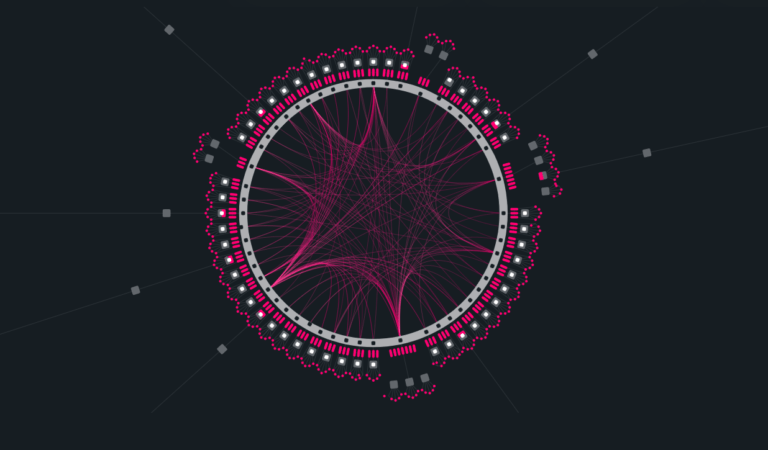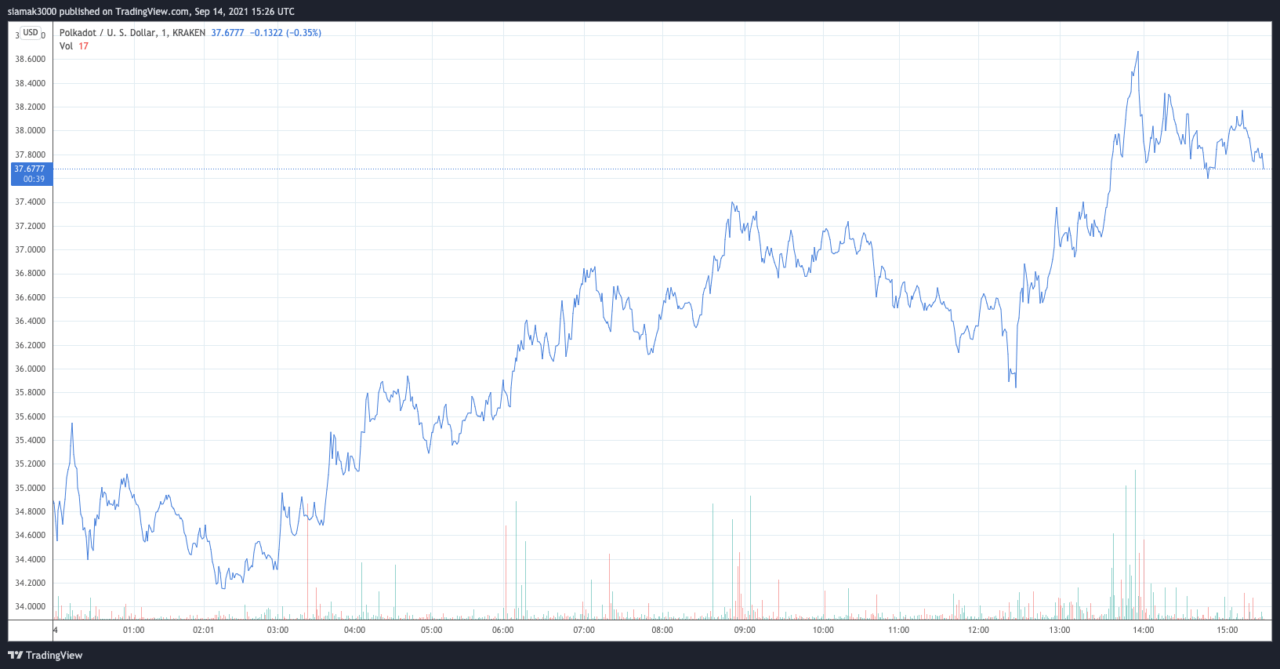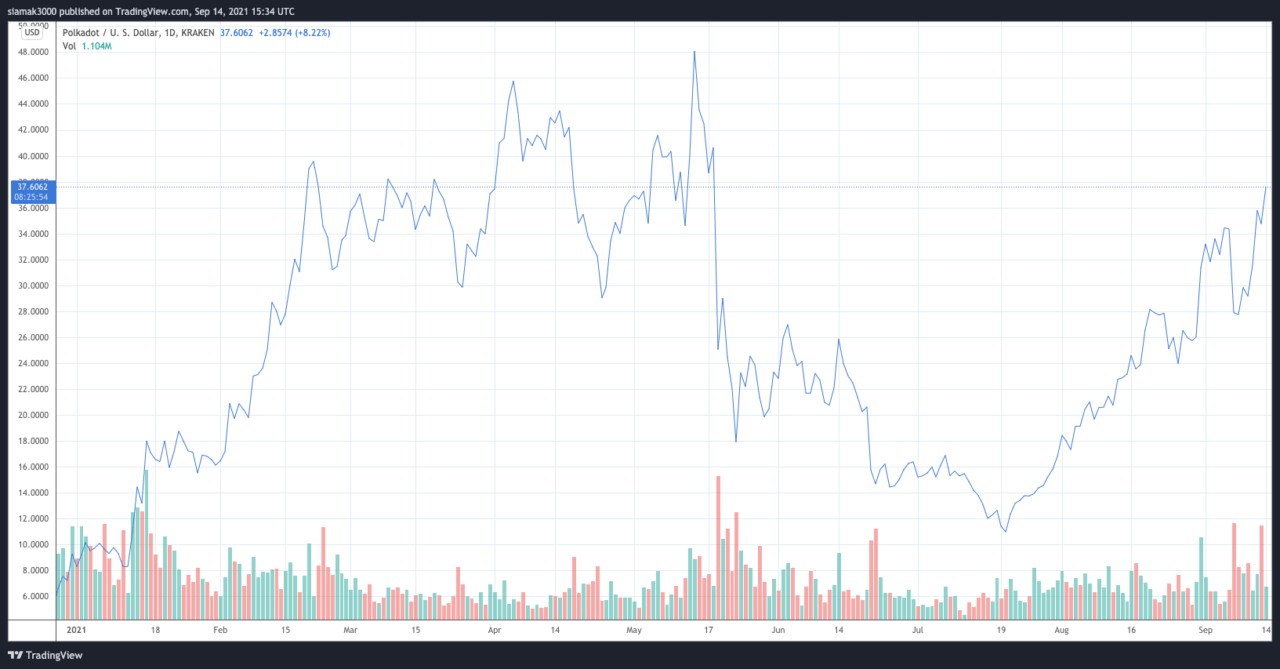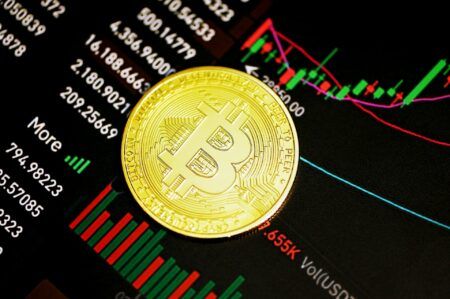This article provides an overview of smart contracts platform Polkadot ($DOT) price action, news, and commentary by influencers, analysts, traders, and investors as of Tuesday (September 14).
What Is Polkadot?
Here is an overview of Polkadot using information from the Polkadot website:
“Polkadot is a network protocol that allows arbitrary data—not just tokens—to be transferred across blockchains. This means Polkadot is a true multi-chain application environment where things like cross-chain registries and cross-chain computation are possible. Polkadot can transfer this data across public, open, permissionless blockchains as well as private, permissioned blockchains.
“This makes it possible to build applications that get permissioned data from a private blockchain and use it on a public blockchain. For instance, a school’s private, permissioned academic records chain could send a proof to a degree-verification smart contract on a public chain.“
Polkadot “unites a network of heterogeneous blockchains called parachains and parathreads.” These chains “connect to and are secured by the Polkadot Relay Chain” and they can “also connect with external networks via bridges.”
And here is what Binance Academy says about Polkadot’s parachains and Relay Chain:
“An individual blockchain in the Polkadot ecosystem is called a parachain (parallel blockchain), while the main chain is called the Relay Chain. The idea is that parachains and the Relay Chain can easily exchange information at all times. You could think of parachains as being similar to individual shards in the planned implementation of ETH 2.0.
“Any developer, company, or individual can spin up their custom parachain through Substrate, a framework for creating cryptocurrencies and decentralized systems. Once the custom chain is connected to the Polkadot network, it becomes interoperable with all other parachains on the network.“
As for the use cases for the $DOT token, Binance Academy has this to say:
“Similar to most other blockchain infrastructure projects, Polkadot has its own native token. Known as DOT, it serves as the network token, just like ETH is the token for Ethereum and BTC is the token of Bitcoin.
“Several use cases exist for this token. First of all, it grants token holders with governance rights of the entire Polkadot platform. This includes determining network fees, voting on overall network upgrades, and the deployment or removal of parachains.
“DOT is also designed to facilitate network consensus through staking. Similar to other networks that involve staking, all DOT holders are incentivized to play by the rules at all times. How come? Well, if they don’t, they could lose their stake.
“The third option is to use DOT for bonding. This is required when new parachains are added to the Polkadot ecosystem. During a bonding period, the bonded DOT is locked. It’s released once the bond duration has ended and the parachain is removed from the ecosystem.“
Latest Price Action
According to data by TradingView, on crypto exchange Kraken, currently (as of 15:25 UTC on September 13), $DOT is trading around $37.8099, up 6.42% vs USD in the past 24-hour period.
As for the year-to-date (YTD) period, $DOT’s return on investment (vs USD) so far in 2021 is approximately +356%.
What Analysts Are Saying
Yesterday (September 13), Simon Dedic, who is Co-Founder and Managing Partner at Moonrock Capital, a blockchain advisory and investment partnership based in London and Hamburg”, said that $DOT is akin to a next-gen tech stock:
Earlier today, pseudonymous analyst “Altcoin Sherpa” had this to say to his over 125K Twitter followers about $DOT’s latest price action:
And finally, Michaël van de Poppe said that he could see $DOT reaching $100-$150 at the peak of the current bull cycle.
DISCLAIMER
The views and opinions expressed by the author, or any people mentioned in this article, are for informational purposes only, and they do not constitute financial, investment, or other advice. Investing in or trading cryptoassets comes with a risk of financial loss.
IMAGE CREDIT
Featured Image Courtesy of Web3 Foundation











